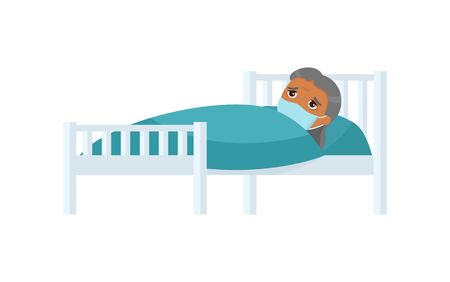Introduction to Achilles Tendinopathy in the UK
Achilles tendinopathy is a common musculoskeletal condition encountered across the United Kingdom, affecting individuals from a wide range of age groups and activity levels. This disorder involves pain, swelling, and impaired function of the Achilles tendon, which can significantly hinder daily activities and limit participation in both recreational and professional sports. Within the British healthcare context, Achilles tendinopathy represents a notable burden due to its impact on mobility, work productivity, and overall quality of life. Recent data suggest that its prevalence is increasing, particularly among middle-aged adults who engage in regular physical activity or those with sedentary lifestyles but sudden increases in exercise intensity. In addition to the direct discomfort experienced by patients, the condition often leads to increased utilisation of NHS resources, including GP consultations, physiotherapy referrals, and sometimes orthopaedic interventions. Addressing Achilles tendinopathy through evidence-based conservative management is therefore crucial not only for individual patient wellbeing but also for optimising resource allocation within the UK’s healthcare system.
2. Current British Guidelines and Recommendations
In the United Kingdom, the conservative management of Achilles tendinopathy is guided by evidence-based recommendations from reputable bodies such as the National Institute for Health and Care Excellence (NICE) and other professional organisations. These guidelines emphasise a patient-centred approach, focusing on non-surgical interventions as the first line of treatment. Below is a summary of the current UK-based recommendations for managing Achilles tendinopathy conservatively:
NICE Guidelines Overview
NICE provides comprehensive guidance for musculoskeletal conditions, including Achilles tendinopathy. The key recommendations include:
| Recommendation | Details |
|---|---|
| Activity Modification | Advise patients to modify or temporarily reduce aggravating activities, particularly high-impact sports or repetitive strain, while maintaining general physical activity. |
| Education and Self-Management | Provide tailored information about the nature of tendinopathy, expected recovery timeframes, and encourage active participation in rehabilitation. |
| Exercise Therapy | Recommend structured exercise programmes, particularly eccentric loading exercises, as a mainstay of conservative treatment. |
| Pain Management | Consider paracetamol or topical NSAIDs for pain relief; oral NSAIDs may be used short-term if necessary. |
| Adjunct Therapies | Consider therapies such as orthoses or heel lifts on an individual basis, especially if biomechanical factors are contributing. |
| Avoid Unproven Interventions | Corticosteroid injections and routine imaging are generally not recommended due to lack of supporting evidence and potential harm. |
Other UK-Based Recommendations
The Chartered Society of Physiotherapy (CSP) and British Orthopaedic Association (BOA) echo NICE’s advice, with added emphasis on early physiotherapy referral. They recommend collaborative goal setting with patients to ensure adherence to rehabilitation protocols. Additionally, the use of shockwave therapy may be considered for chronic cases not responding to initial conservative measures, though it should only be provided by appropriately trained clinicians.
Key Principles in Conservative Management (UK Perspective)
- Individualised Treatment: Tailoring interventions based on patient lifestyle, comorbidities, and personal goals.
- Multidisciplinary Approach: Encouraging collaboration between GPs, physiotherapists, podiatrists, and other healthcare professionals for optimal outcomes.
- Early Intervention: Prompt initiation of conservative measures to prevent chronicity and enhance recovery prospects.
The overarching message from UK guidelines is clear: conservative management remains the gold standard for most cases of Achilles tendinopathy, with surgery reserved for refractory situations only after comprehensive non-operative measures have been exhausted.

3. Assessment and Diagnosis in Clinical Practice
Key Considerations for Assessment
Accurate assessment and diagnosis of Achilles tendinopathy are crucial in the context of conservative management, as highlighted by current British guidelines. A thorough approach ensures effective patient care, optimises outcomes, and minimises the risk of misdiagnosis or inappropriate treatment. The process should be patient-centred, taking into account the individual’s clinical presentation, activity levels, and expectations.
Patient History
A detailed patient history forms the cornerstone of diagnosis. Clinicians in the UK are encouraged to explore symptom onset, duration, and aggravating or relieving factors. Enquiries should include physical activity patterns—particularly recent changes in walking, running, or sporting habits—as well as previous injuries or treatments to the lower limb. Notably, it is important to consider systemic conditions such as rheumatoid arthritis or metabolic disorders, which may influence tendon health.
Physical Examination
The physical examination should be systematic and structured. British practice emphasises observation for swelling, localised thickening of the tendon, and visible deformities. Palpation along the length of the Achilles tendon helps identify areas of tenderness or nodularity. Functional tests—such as single-leg heel raises—are recommended to evaluate pain reproduction and functional impairment. It is also good practice to assess for related biomechanical issues, including foot posture and calf muscle tightness.
The Role of Imaging
Imaging is not routinely indicated during initial assessment unless there are atypical features or diagnostic uncertainty. According to NICE and other UK-based guidelines, ultrasound imaging may be considered if symptoms persist despite initial conservative management or if rupture is suspected. MRI is reserved for complex cases or when surgical intervention is contemplated. Importantly, imaging findings should always be interpreted within the clinical context; asymptomatic tendon changes are common in active populations.
A British Clinical Perspective
In summary, a methodical assessment—rooted in patient history and physical examination—remains central to British best practice. Imaging serves as an adjunct rather than a first-line tool. This approach fosters accurate diagnosis and underpins tailored conservative management plans that align with both evidence-based recommendations and patients’ individual needs.
4. Evidence-Based Conservative Treatments
Within the UK, the conservative management of Achilles tendinopathy is guided by robust evidence and national clinical guidelines, with a clear emphasis on non-surgical interventions as the first-line approach. The following discussion outlines the core modalities commonly recommended in British practice, reflecting both current research and NHS pathways.
Physiotherapy: Foundation of Conservative Care
Physiotherapy is widely regarded as the cornerstone of treatment for Achilles tendinopathy. UK guidelines advocate early referral to physiotherapists experienced in musculoskeletal conditions. Treatment programmes are highly individualised, focusing on restoring function, improving flexibility, and gradually increasing tendon load tolerance.
Eccentric Loading Programmes
Eccentric calf muscle exercises, particularly the Alfredson protocol, remain the gold standard and are consistently recommended in NICE and Chartered Society of Physiotherapy (CSP) guidelines. These exercises have shown significant efficacy in reducing pain and improving activity levels. A typical UK-based programme may include:
| Exercise | Frequency | Duration |
|---|---|---|
| Eccentric Heel Drops (straight knee & bent knee) | 2 x daily | 12 weeks |
| Progressive loading (weights or resistance bands as tolerated) | As symptoms improve | Ongoing |
Patients are encouraged to persist with eccentric loading for at least 12 weeks before considering alternative therapies.
Orthotics and Footwear Modification
The use of orthotics is considered when biomechanical factors contribute to symptoms. NHS podiatry services may provide custom insoles or heel lifts to reduce tendon strain. Advice on appropriate footwear—supportive shoes with cushioned heels—is a routine part of British conservative management.
Pain Management Strategies
Pain control enables patients to participate fully in rehabilitation. Analgesic strategies typically align with UK best practices:
- Paracetamol or topical NSAIDs: First-line for mild to moderate pain; oral NSAIDs used short-term if necessary.
- Icing protocols: Recommended after exercise sessions to manage inflammation.
- Avoidance of corticosteroid injections: Due to risk of tendon rupture, these are rarely used in UK primary care unless under specialist supervision.
Multidisciplinary Support and Patient Education
The importance of patient education is emphasised throughout UK pathways. Patients receive information leaflets explaining their condition, expected recovery timelines, and self-management strategies. In complex cases, multidisciplinary input from physiotherapists, podiatrists, GPs, and occasionally sports medicine specialists ensures a holistic approach tailored to individual needs.
Summary Table: First-Line Conservative Interventions in UK Practice
| Treatment Modality | Main Components | NHS/UK Guidance Status |
|---|---|---|
| Physiotherapy (incl. eccentric loading) | Tailored exercise prescription; progressive load increase | Strongly recommended; first-line intervention |
| Orthotics/Footwear Advice | Custom insoles; supportive shoes; heel lifts as needed | Recommended if biomechanical issues present |
| Pain Management | Paracetamol, topical/oral NSAIDs, icing protocols | Supportive role; adjunct to rehab programme |
| Corticosteroid Injection | Avoided due to rupture risk except in selected cases | Seldom used; requires specialist input |
This evidence-based framework ensures that patients with Achilles tendinopathy in the UK receive structured, safe, and effective conservative care as their initial treatment pathway.
5. Patient-Centred Care and Shared Decision-Making
Delivering truly patient-centred care is fundamental to the conservative management of Achilles tendinopathy within the UK, as recommended by the National Institute for Health and Care Excellence (NICE) and other British guidelines. Involving patients in management decisions not only enhances their satisfaction but also improves adherence to treatment and clinical outcomes.
Approaches to Involving Patients in Management Decisions
Effective communication is at the heart of shared decision-making. Clinicians should ensure that patients are fully informed about their diagnosis, prognosis, and all available conservative treatment options, including their potential benefits and risks. Utilising plain English, visual aids, and decision support tools can help patients from diverse backgrounds understand complex information. Encouraging questions and respecting each individual’s values, preferences, and lifestyle choices are essential elements of this approach.
Supporting Self-Management
Empowering patients to take an active role in their recovery is a cornerstone of evidence-based practice in the UK. Providing clear instructions on exercise programmes—such as eccentric calf strengthening—alongside written materials or digital resources, enables patients to manage their symptoms effectively at home. Regular follow-up appointments allow clinicians to monitor progress, address concerns, and adjust recommendations as needed. Signposting to reputable NHS resources or local physiotherapy services can further support ongoing self-management.
Tailoring Treatment for Diverse British Populations
The UK’s rich cultural diversity requires clinicians to adapt care plans sensitively. This may involve offering translated materials, considering religious practices when scheduling rehabilitation sessions, or being mindful of socioeconomic barriers that might affect access to physiotherapy or appropriate footwear. By personalising interventions and recognising social determinants of health, clinicians can help ensure equitable outcomes for all patients with Achilles tendinopathy across Britain.
6. When to Refer: Escalation and Multidisciplinary Pathways
Despite best efforts in conservative management, not all patients with Achilles tendinopathy will respond adequately to initial interventions. Recognising when to escalate care is crucial for optimal outcomes. According to British guidelines, referral should be considered if there is insufficient improvement after 12 weeks of structured, evidence-based conservative therapy. Early identification of non-responders is essential—signs include persistent pain, functional limitations affecting daily life or sport, and failure to progress despite adherence to a comprehensive rehabilitation programme.
The NHS provides clear musculoskeletal (MSK) pathways for such cases. Referral to an NHS MSK service ensures that patients are assessed by clinicians experienced in complex tendon conditions. These services typically offer a multidisciplinary approach, involving physiotherapists, podiatrists, sports medicine specialists, and orthopaedic consultants when necessary. This team-based model facilitates individualised care plans and access to advanced diagnostic tools, such as ultrasound imaging or MRI, which may help rule out differential diagnoses like partial ruptures or systemic conditions.
Multidisciplinary input can include further physiotherapy with specialist techniques (e.g., shockwave therapy), bespoke orthotic intervention, and pain management strategies tailored to the patient’s lifestyle and goals. In some cases, particularly where conservative measures have been exhausted and significant impairment persists, surgical consultation may be warranted as per NICE recommendations.
For GPs and allied health professionals working within the NHS framework, timely referral is both a clinical responsibility and a patient-centred action. Open communication with your local MSK team can streamline this process—most areas have clear electronic referral systems or advice-and-guidance options available via NHS e-Referral Service (e-RS). Ensuring that all documentation details prior treatments, response levels, and relevant comorbidities will help facilitate efficient triage and ongoing care coordination.
Ultimately, escalation through multidisciplinary NHS pathways aligns with best practice standards outlined by British guidelines and maximises opportunities for recovery in patients with persistent Achilles tendinopathy.
7. Summary and Future Directions
In summary, the conservative management of Achilles tendinopathy remains the cornerstone of treatment in the UK, guided by robust British guidelines and a growing body of evidence-based practice. Key strategies, such as eccentric loading exercises, patient education, activity modification, and the judicious use of adjunct therapies like orthotics and manual therapy, have demonstrated consistent benefits in both pain reduction and functional improvement. It is essential for clinicians to adopt a patient-centred approach, tailoring interventions to individual needs while considering the latest clinical guidance.
Emerging evidence highlights the potential role of newer modalities—such as shockwave therapy and high-volume injections—but these require further validation through high-quality randomised controlled trials within UK populations. There is also an increasing emphasis on long-term outcomes, prevention strategies, and the psychological impact of chronic tendinopathy, suggesting that future research should explore multidisciplinary models of care and digital health interventions for improved accessibility.
For ongoing research and clinical practice development, it is recommended that UK practitioners continue to engage with updated NICE guidelines and participate in national audit programmes to ensure best practice standards. Collaboration between physiotherapists, sports medicine specialists, GPs, and researchers will be vital in refining protocols and integrating innovative approaches. Ultimately, maintaining a flexible yet evidence-driven management plan will support optimal recovery and quality of life for individuals affected by Achilles tendinopathy across Britain.

